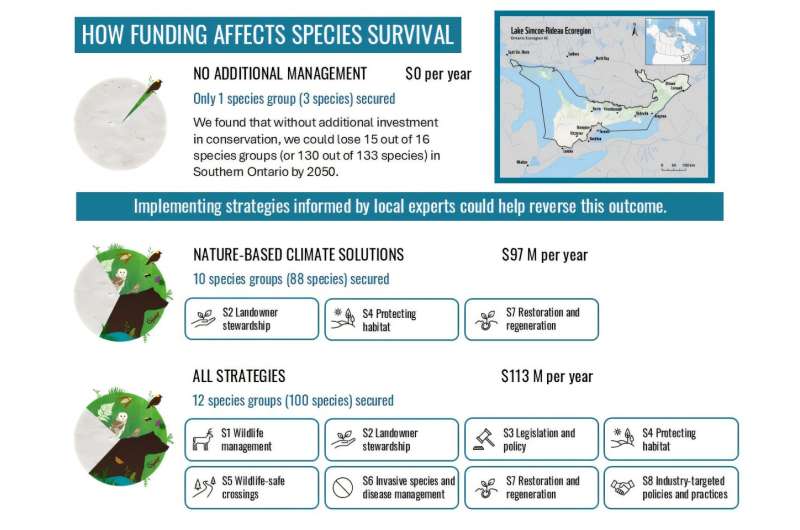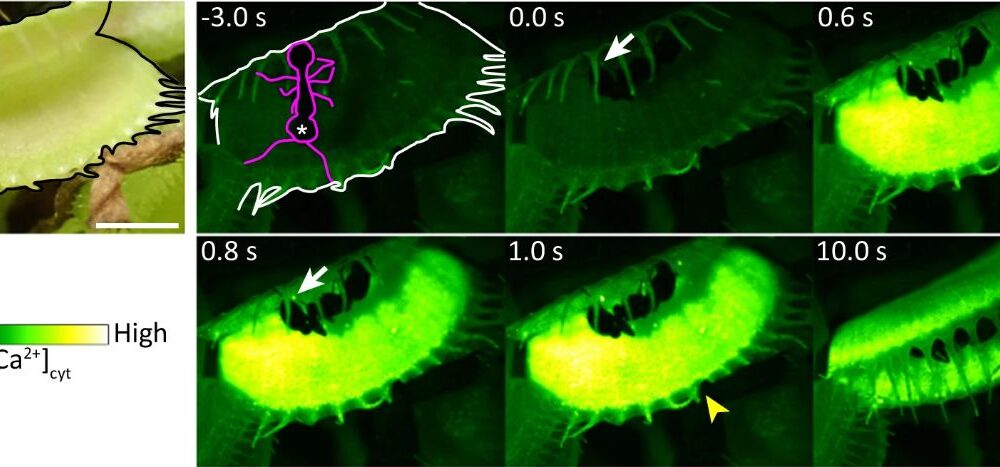A recent study highlights a critical conservation challenge in Southern Ontario, where 130 species are at risk of local extinction by 2050. According to research from the University of British Columbia (UBC) and the World Wildlife Fund Canada, the survival of these species is threatened unless immediate action is taken by the provincial government. The study emphasizes that if no significant measures are implemented, a staggering 98% of the species currently classified as at risk could vanish from the region within the next quarter-century.
The findings were published in the journal Ecological Solutions and Evidence, focusing on the biodiversity status in the Lake Simcoe-Rideau ecoregion, an area known for its ecological significance. The research details that an annual investment of just $7 per Ontarian, totaling approximately $113 million, in eight targeted conservation strategies could facilitate the recovery of up to 100 species. These include well-known animals such as the black bear, the short-eared owl, and the Blanding’s turtle.
Cost-Effective Strategies for Biodiversity Recovery
The study employed a methodology known as Priority Threat Management (PTM), developed by Dr. Tara Martin and her team. This innovative tool utilizes local expert insights to assess the costs, benefits, and feasibility of various conservation actions. By pinpointing the most effective strategies, researchers aim to maximize biodiversity recovery while minimizing financial expenditure. The eight strategies identified include habitat protection, wildlife management, and legislative reforms targeting invasive species.
Dr. Martin, a senior author of the study and a UBC professor, stressed the urgency of addressing the risks faced by species at risk across Canada, noting that there are currently 864 species facing extinction nationwide. She remarked, “PTM identifies how to make the most out of the resources we have and highlights the funding shortfall needed to give these plants and animals the best chance of recovery.”
In addition to benefiting wildlife, the proposed strategies promise to enhance water quality, protect species of cultural significance to Indigenous Peoples, create employment opportunities, and contribute to carbon storage and sequestration. Implementing these conservation measures could potentially prevent the release of at least 11.2 million tonnes of CO2 equivalent emissions while sequestering an impressive 137.6 million tonnes of CO2 equivalent, thus assisting Ontario in addressing its greenhouse gas emissions over time.
Call to Action for Environmental Protection
James Snider, Vice President of Science, Knowledge and Innovation at WWF-Canada, emphasized the critical need for new investments and robust legislation. He stated, “Without new investments and strong legislation, we risk losing species like the American bumble bee, barn owl, Eastern wolf, and piping plover.” Snider’s comments underline the potential ecological consequences of inaction, not just for wildlife but also for the well-being and livelihoods of local communities.
The UBC and WWF-Canada teams have already applied the PTM framework to other regions, such as the Wolastoq watershed in New Brunswick, where they have successfully restored over 5,300 hectares of habitat and planted more than 31,000 trees and plants. This proactive approach illustrates the potential for meaningful environmental restoration and biodiversity preservation.
Dr. Martin concluded, “By applying PTM to the Lake Simcoe-Rideau ecoregion, we’ve identified the most effective conservation actions and can now quantify their broader benefits. This gives decision-makers a clear roadmap to recover species at risk while delivering real environmental and societal value.”
As the deadline for intervention approaches, the findings of this study serve as a compelling call for immediate action to preserve the rich biodiversity of Southern Ontario. Without decisive measures, the region risks losing not only its species but also the ecological integrity that supports local communities and ecosystems.







